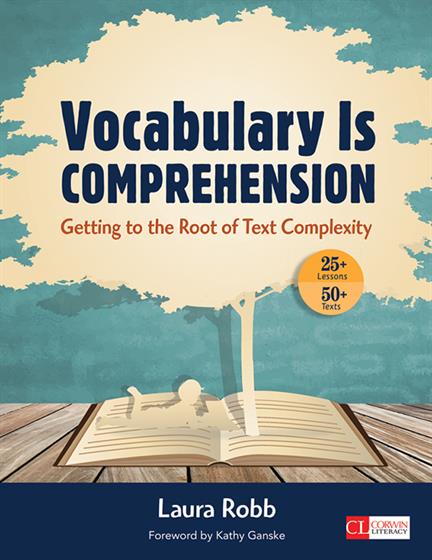Foreword by Kathy Ganske
Acknowledgments
Chapter 1. How the Common Core Has Changed the Rules of the Game Forever (Even If the Standards Go Away)
Big Ambition: Vocabulary in the Context of All the ELA Standards
Vocabulary in the Context of Complex Text Reading
Research Highlights
The Lesson Structure: 10 to 15 Minutes a Day
The Big 10 Approach to Reading Words Closely
The Big 10 and the Common Core Vocabulary Standards
Collaborate and Learn
Chapter 2. Ten Short Lessons for the Big 10
Which Words Do I Teach?
Laying Out the Lessons for the Big 10
Elements of the Lesson
Lesson 1: Understanding Descriptive Words to Visualize
Lesson 2: Decode and Define Multisyllable Words
Lesson 3: Understanding Personification
Lesson 4: Write to Show Understanding of Words
Lesson 5: Synonyms, Antonyms, and Multiple Meanings
Lesson 6: Connecting Words to a Text's Concepts
Lesson 7: Understanding Denotative and Connotative Meanings
Lesson 8: Showing Word Knowledge via Twitter
Lesson 9: Four Words to Respond to Texts
Lesson 10: Multiple Forms, Multiple Meanings
Collaborate and Learn
Chapter 3. Figurative Language
Helping Students Not to Be Cowed by Figurative Language
Guidelines for Reading Poetry
Lesson 1: Alliteration
Lesson 2: Metaphor
Lesson 3: Onomatopoeia
Lesson 4: Repetition
Lesson 5: Simile
Lesson 6: Symbols and Symbolism
Lesson 7: Idioms
Using Discussions to Interpret Figurative Language
Three Reproducibles for Discussing and Writing About Poems
Discussions on Class Blogs
Collaborate and Learn
Chapter 4. Getting to the Root of Words
What the Common Core State Standards Have to Say
Review Lessons on Prefixes and Suffixes
Lesson 1: Prefixes
Lesson 2: Suffixes
A Five-Day Routine for Teaching Roots
Lesson 3: Expand Vocabulary With Roots, Prefixes, and Suffixes
Lesson 4: Make Words With Prefixes, Suffixes, and Roots
How to Link the Lessons to Students' Reading
More Strategies That Use Roots, Prefixes, and Suffixes
Lesson 5: Prefix Brainstorm
Lesson 6: Denotation-Connotation Map
Collaborate and Learn
Chapter 5. General Academic and Domain-Specific Vocabulary
The CCR Anchor Standards for Reading
Quick Recap: How the Lessons in This Book Address the Anchor Standards
Four Categories of Academic Vocabulary
The Best Use of Word Lists
Why General Academic Vocabulary Is Key
Basic Elements of General Academic Vocabulary Lessons
Lessons for Teaching General Academic Words
Lesson 1: Rate Your Word Knowledge
Lesson 2: ABC List and Link
Lesson 3: Concept Map and Writing
Lesson 4: Words in the World
Lesson 5: Making Analogies on a Class Wiki or Blog
Lesson 6: Tweeting for Word Learning
Collaborate and Learn
Chapter 6. Assessing Vocabulary
So How Are They Reading Complex Texts?
Informative Assessment and Responsive Teaching
Why Final Tests Are Problematic
Gathering Data Throughout the Lessons
Making Instructional Decisions and Modifications
Introducing Lessons: The First Day
Practicing the Lessons: Second and Possibly Third Days
Applying the Lessons: Completing Written Work
Self-Evaluation
How to Scaffold and Reteach
Collaborate and Learn
Concluding Thoughts on Vocabulary Instruction
Ten Ways Students Can Expand Their Vocabularies
References
Index



